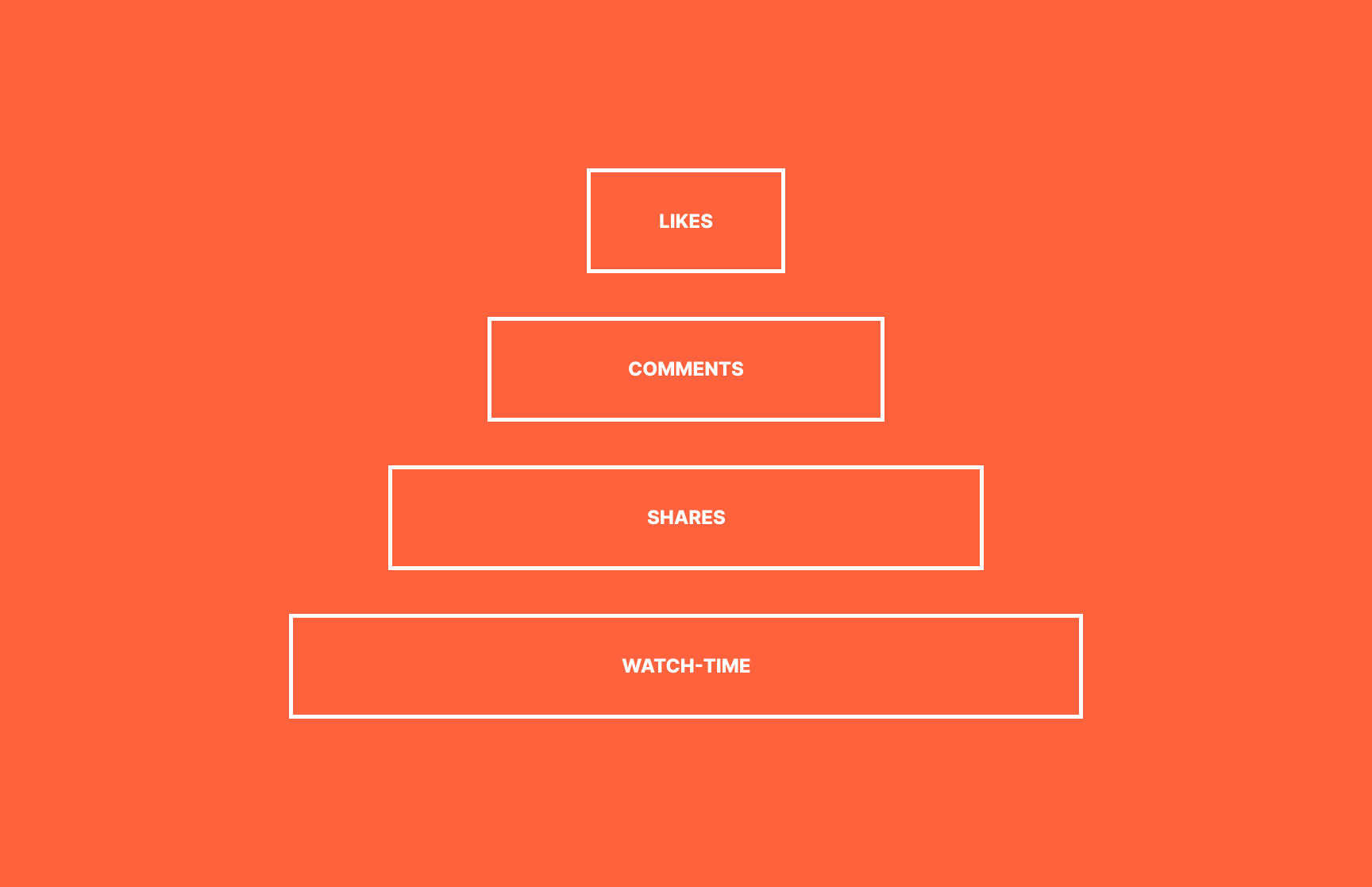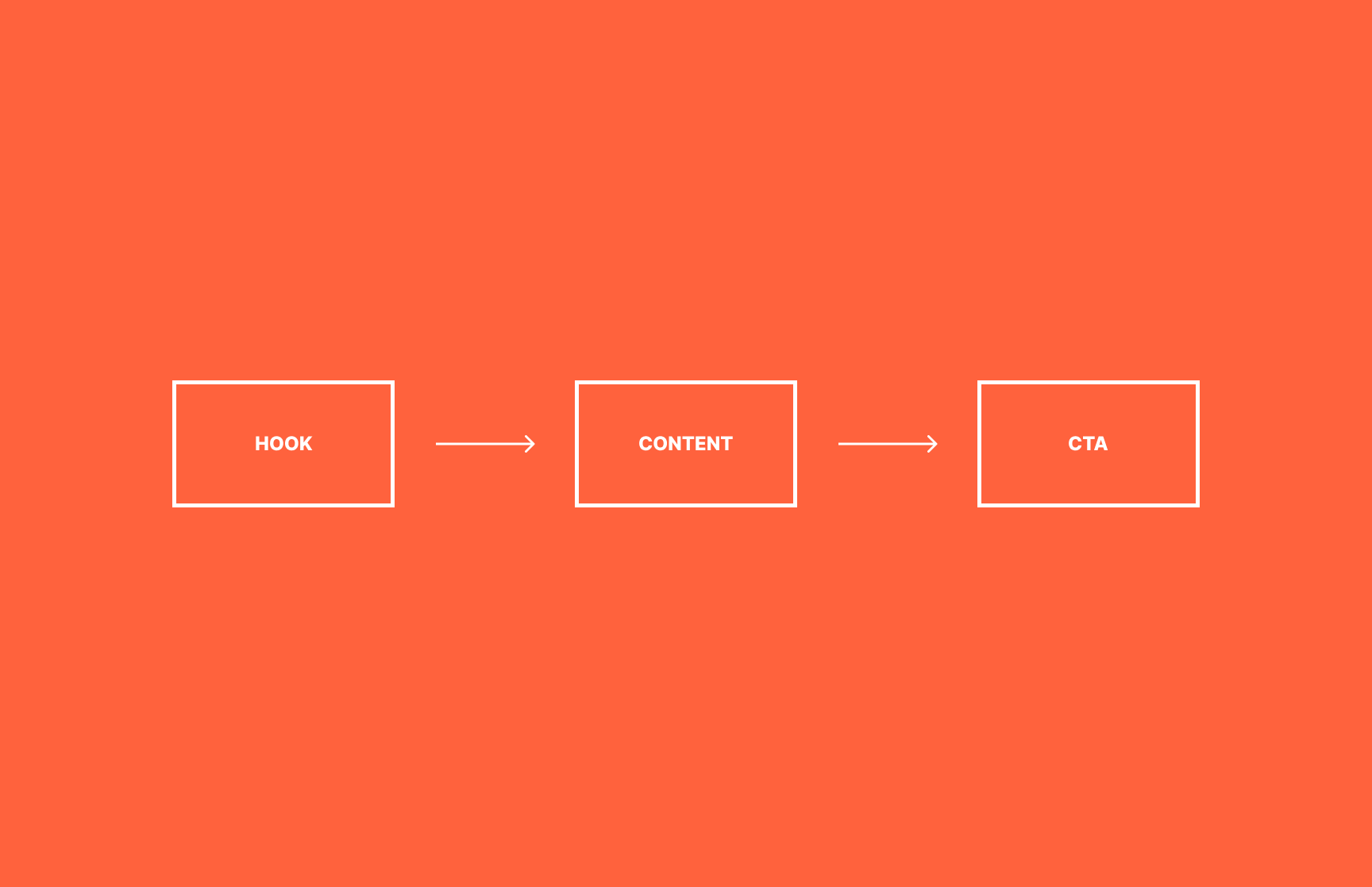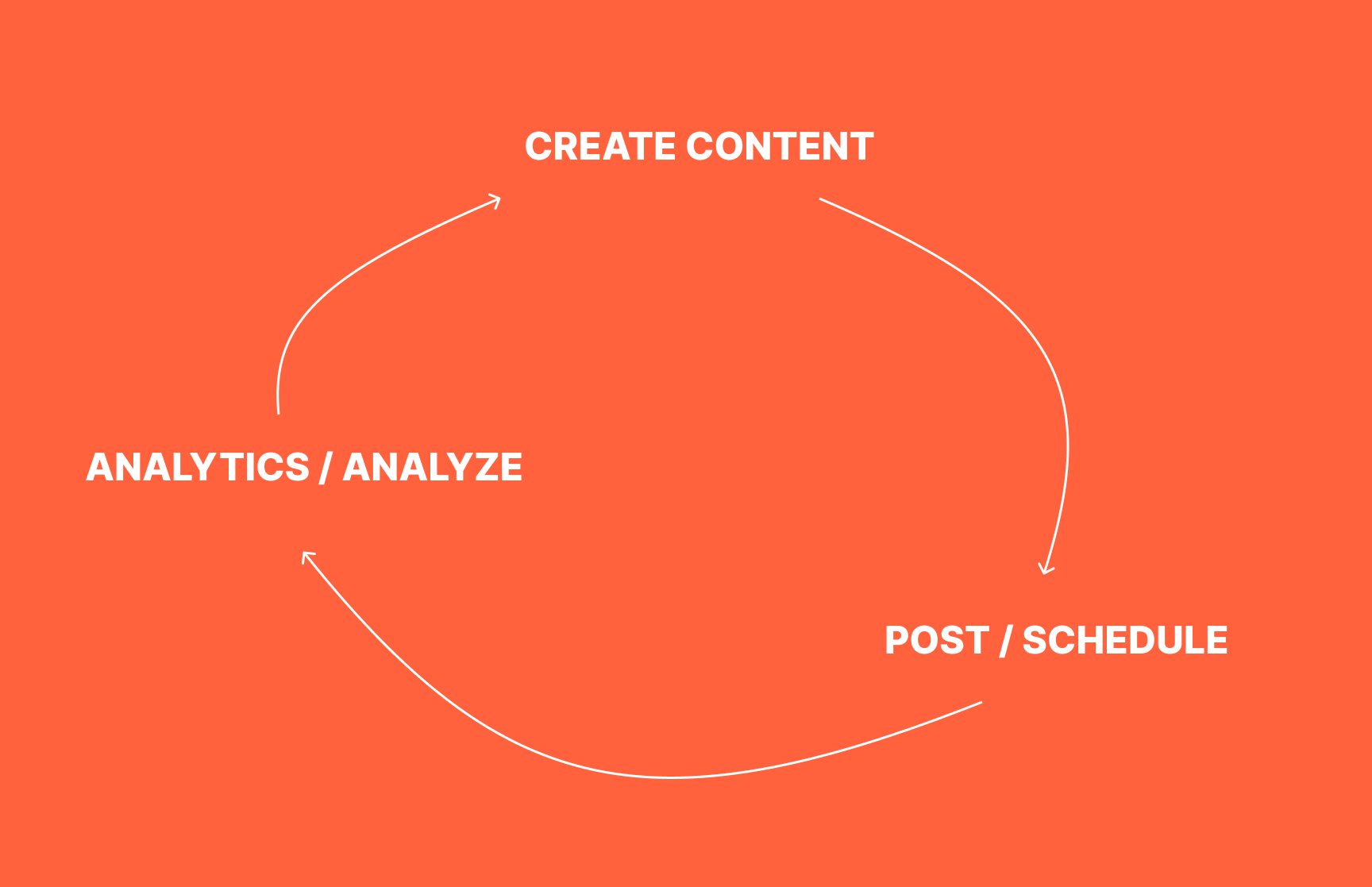How to Go Viral With Content Marketing
From 0 to 10K customers from organic content.
"If you spend 1-hour making content, you should spend at least 1-hour marketing it."
Preface
The key to going viral is understanding the algorithm. This is what will be explained in the preface.
Motivation
What is the TikTok's motivation? What is YouTube's motivation? Why would they rank one video higher than the other? Well, that's simple, the goal of any company is to maximize shareholder value. They want to make MORE MONEY.
In order for us to go viral, we must align our interests with theirs.
How Advertiser Led Companies Work
Companies that make money from advertising are double-sided marketplaces. A set of users give away their attention for entertainment or learning, and the other set buy that attention.
You don't pay anything to use TikTok, Facebook, YouTube, or any social platform. You pay with your atttention.
Companies (advertisers) byy that attention in the form of ads.
Now that we understand this, what is the vested interest?
Vested Interest
Social platforms must have more advertisers, paying more money, year after year, to grow. In order to get more advertisers, they must have more attention. More people must watch videos from longer in order to get the attention.
Recommendation algorithms, heavily value Watch Time above all. That's the only way they make money. If you can get people to watch more of your videos, for longer, the algorithm will reward you.
Going Deep On Recommendation Algorithms
My background lies in deep learning, a subset AI & machine learning that focuses on large multi-layer neural networks. Recommendation algorithms stem for the research of this field.
Understanding Neural Networks
A neural network is a probabilistic model. It gives you a set of probabilities in which the outcome you are measuring is likely to occur.
In terms of recommendation algorithms, what is the likelihood that the person likes this next video, so that they stay on the platform.
How is This Predicted
The recommendation algorithms has many inputs called feature ids. A feature id is an input given to the neural network to try and predict which video is best to recommend.
The following is a paper by Bytedance (founders of TikTok) that describes how these feature ids are handled.
An example of the feature ids are:
- Transcript of the video
- Comments on the video
- Shares
- Watch Time
- Likes
- Objects in the video
- Volume of the video
- Text / Title / Description of the video
All of these are processed as inputs to the probabilistic model, and this models spits out the video that best matches your interests.
However, not all of these have the same weighting when it comes to the recommendation algorithm. As stated before, you must align your interestes with the platform. Watch-time is king 👑.
Feature Ids: Order of Importance
- Watch time: The longer viewers watch your video the better. If they watch multiple times, you are going to go viral.
- Shares: If people share your video to other platforms, it brings more people to the original platform, thus aligning with the original platforms interest.
- Comments: This shows that platform that people really like your content and are engaging with it. If some people like it, others probably will as well.
- Likes / Bookmarks: The lowest form of engagement, but at least shows some engagement.

Pooled Stages
There are so many videos to pick from for these recommendation algorithms. You must have better feature ids than all other videos to win.
Videos are pooled into stages of virality. These are the following stages of views:
- 0 → 1K views
- 1K → 10K views
- 10K → 100K views
- 100K+ views
You're video must do better than the people in said group in order to go the next one. Remember, these platforms what you to go viral, they want people to stay on the platform. You have to produce good content.
Randomness
Going back to neural networks, at the end of the day they are probabilistic models. They make mistakes, they aren't stochastic. Moreover, a certain video might get really good feature ids from the beginning and heavily outperform.
The feature ids at the beginning are totally random, if you get good ones, your video may go viral. Bad ones and your video doesn't go anywhere.
Getting Started With Content
Step 1
The first thing you have to do is create an account, and optimize that account of SEO (Search Engine Optimization). You want people that search your account to find you.
Username: Make sure your username is clean, don't put any special characters or weird numbers.
Name: Make sure the name is the product you are selling, or the brand you are building. (This could be your own personal brand).
Profile Picture: The profile picture has to be high quality, and describes you exactly. Look at other big people in the space. Their profile picture is clean, and usually very simple. Have good background lighting, good contrast, and make sure it's high quality, pixel wise.
Description: A description that describes exactly what you are doing. You should be able to explain this to a 10 year old and they would understand. Moreover, focus on a single niche. Don't attack huge areas from the beginning, eat an elephant one bite at a time.
Setup
You're setup isn't going to change your virality. A 5k camera isn't what's going to make you go viral. The feature ids on your videos is what's going to make you go viral.
Use your phone camera, or your laptop camera. That's all you need.
Video Ideas
In order to get video ideas you must have a plan. What are you planning to create your content about? Is your content to promote your product? Is your content to build an audience? Is your content to teach someone something specific? What is it?
Sell a Product
- Find viral videos of competitors or those in the same niche
- Think of ways to recreate videos with your own twist (controversy)
- Look at formats of videos that perform best, and do more of those.
Build an Audience
- Must be in a specific niche, and then expand from there.
- Be unique so people care, if you are doing what everyone else is doing, no one is going to care.
- Engage with your audience on many platforms, and solve a problem for them.
- What do you want from your audience?
Teach Something
- Solve the problem for them.
- Create supplementary material to go with your videos.
- How is it that as soon as someone watches your video, they get the value implemented from them. Ex. Sales → write the exact sales script and give it to them.
Post SEO
You want to incorporate keywords into your captions and videos that are relevant to what you want poeple to search for
- You want those captions to be both on the screen as the video is playing and the captions.
Include 2-3 SEO categorization hashtags in your videos.
Add voice overs / text to speech with a couple of keywords. This indicates to the feature id puller that's those keywords are important.
Use trending sounds and viral templates in your niche in order to appeal to your audience better.
Creating Content
The number one rule is to give people a reason to watch the entire video. Put at hook at the beginning.
Example Hooks
- If you like ___ you're gonna like/hate this.
- I spent ___ years designing this.
- For my male/female audience
- My secret strategy to ____
- You won't believe this __ hack!
- Are you guilty of ___ ?
- 4 Mistakes you're making on/with
- Have you heard about ___?
- Proven ways to ___
Structure of the Video
Each video must start with a hook. You want to grab people's attention in the first 1-2 seconds. Something clickbaity, but not make it clickbait. It's only clickbait if you don't give what you promised.
The video must contain some controversy. This is what makes people watch the whole video, and share the video. Thus heavily boosting your feature ids. You want people to go straight to the comments because of your controversial video.
Remember: Focus on getting people to watch to the end. Mention something near beginning of the video but don't show it until the end. Write a storyline that people will follow.

Promotion
If you are promoting something, value should be 3:1. For every three pieces of content you give value, you promote your product once.
The more value you give other users, for free, the more they will have the desire to give you something in return. Make your free stuff better than others paid stuff.
Type of Content
Look at the structure of your content. Remember, most things in life are numbers games. Your content must scale so that you are post multiple times per day, every day.
For example, if you have a podcast, all of a sudden, one long form piece of content can buy turned into many shorter ones.
Automation & Scaling
You now want to build a machine. Build a machine that spits out content for you! Each piece of content should be on multiple platforms, all at once.
Posting Schedule
You should post 3-4 times a day on a single account. You want to be very consistent, and religous about doing this every day.
Test out different forms of content and trends that get you the best results. Once a trend or format works, recreate that same hit with different variations and keep posting.
Keep testing until you find the right trend and ride the entire trend out.
AI Tools
You want to use tools that create this content for you. Input a large podcast, and the content is divided into multiple clips for you. Disperse does exactly this.
Make sure most of the editing of the videos is done using AI.
Our Software
- Disperse is a full-stack tool for your content creation and social media management. It allows you to create content using AI-Native tools and post / schedule that content to multiple social platforms, all within the same platform.
- It allows you to input a long video, and it will automatically cut it that video into clips and give you a full editor experience.
- Moreover, it gives you all of the tools to post on multiple social platforms at once.
- Create a month of content on all social platforms at the beginning of each month.
Demo of Disperse
All Platforms
You must post your content on all platforms, in order to gain the largest likelihood of getting your videos recommended on those platforms. The more videos, on more platforms, the higher the likelihood you go viral.
Time
You should be spending most of your time optimizing your content for feature ids, not posting on multiple platforms. Using our platform, Disperse, you can schedule a month full of content for less than $1 a day.
This way you can post 100s of pieces of content a month with an hour of work.
Use tools that provide you with the highest leverage on your time.
Iteration
You want to keep improving, and making your content better everyday. You should always be asking yourself what you can be doing to get the most feature ids on your videos so that your videos go viral.
Check your analytics on each of your social on Disperse, at least once a week, and iterate on how you can make your content better.
Keep up this flywheel and in no time you will be one of the best in your niche.

